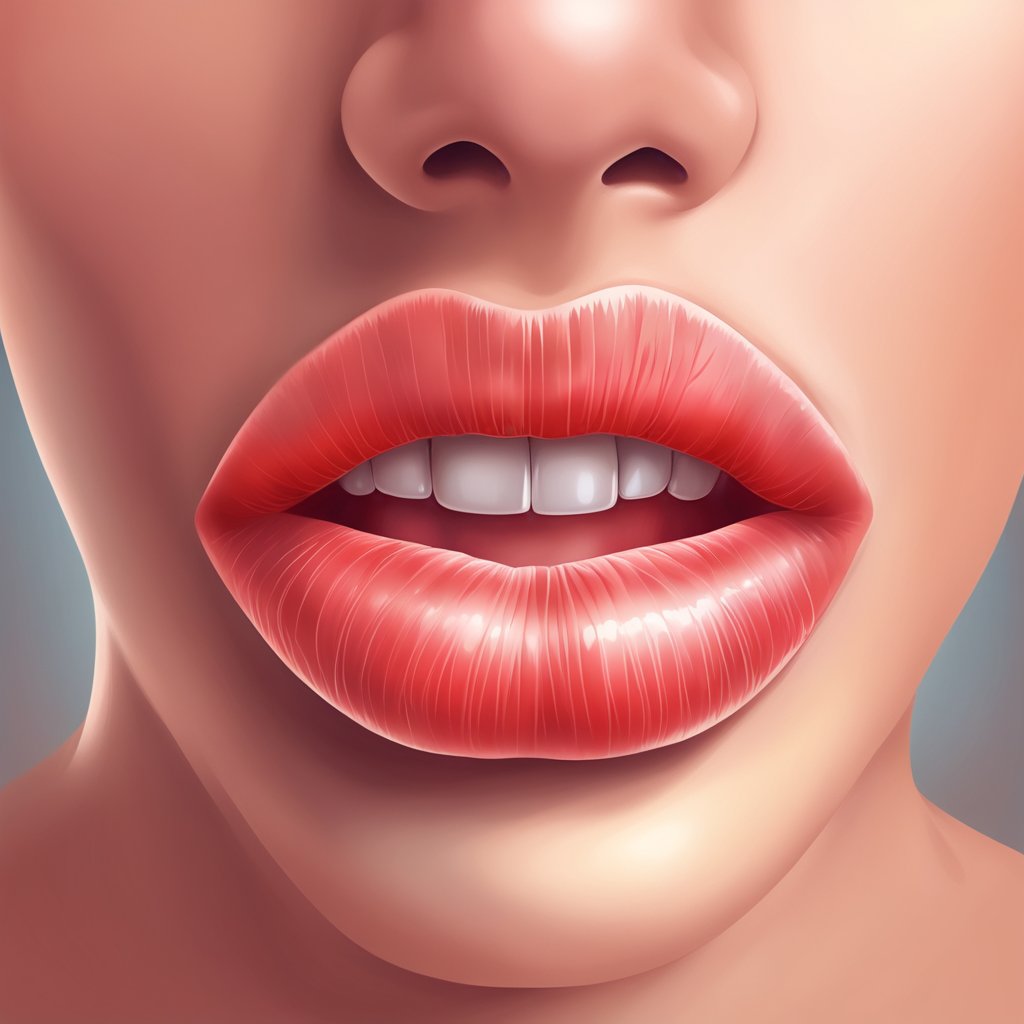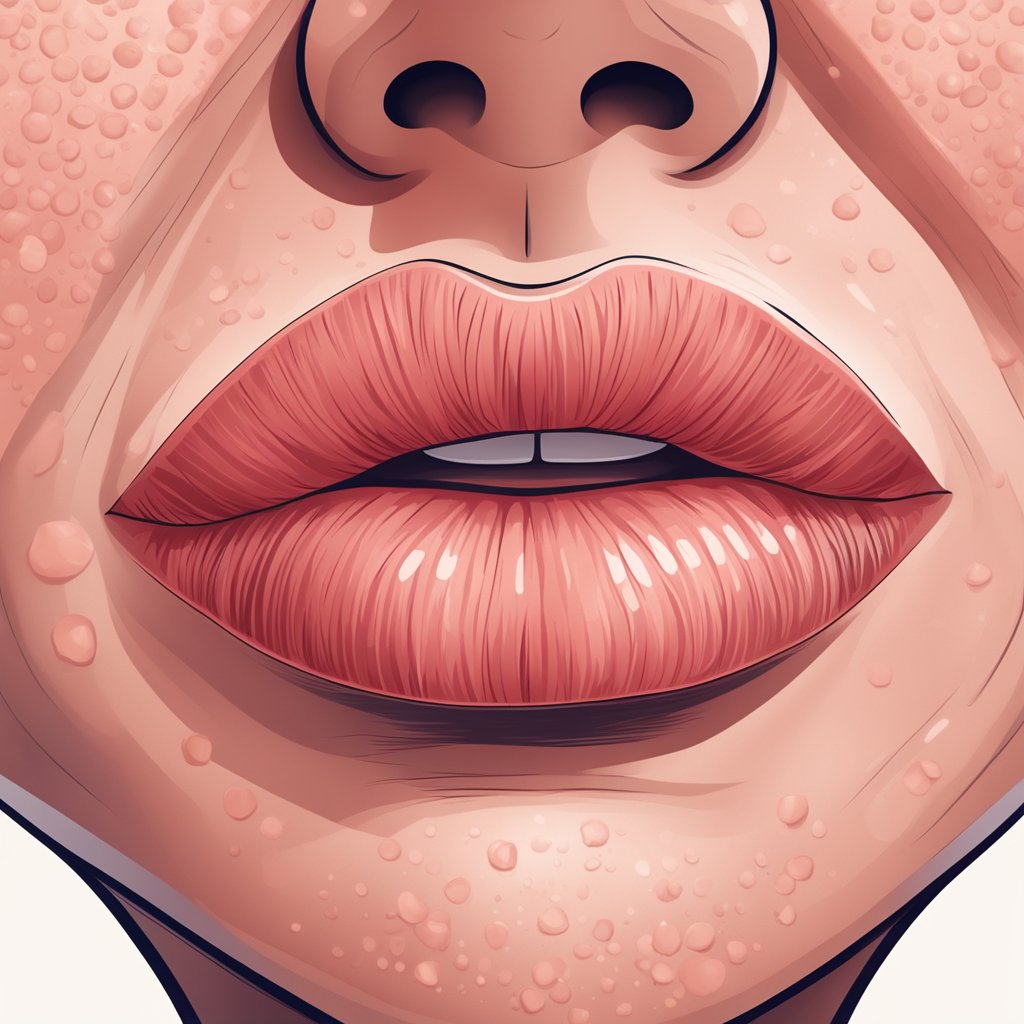Lip rash can be an uncomfortable and sometimes unsightly condition that affects individuals of all ages. Caused by various factors, including allergic reactions, infections, environmental conditions, or underlying health issues, lip rashes can present a range of symptoms. These symptoms often include redness, swelling, itching, and sometimes pain, which can lead to further complications if not properly addressed.

Diagnosis of a lip rash is a crucial step in effective management. Through medical history, physical examination, and potential tests, healthcare providers can determine the root cause of the inflammation. Upon identifying the source, a suitable treatment plan can be formulated, ranging from simple home remedies to prescription medications.
Preventive measures are also essential in avoiding the onset or recurrence of lip rashes. Understanding the common triggers and implementing daily care routines to protect the lips can significantly reduce the likelihood of developing a rash.
Key Takeaways
- Lip rash symptoms can vary but often include redness and itching.
- Accurate diagnosis is vital for effective lip rash treatment.
- Preventative strategies can help avoid the recurrence of lip rashes.
Understanding Lip Rash

I’ll begin by addressing the crucial elements to recognize a lip rash, classifying the types, identifying symptoms and signs, and understanding common triggers and causes.
Classification of Lip Rashes
Lip rash manifests in various forms, each with its distinct characteristics. I’ll focus on two significant types: cheilitis and dermatitis, both of which are inflammatory conditions but differ in their specific sub-categories.
Cheilitis refers to inflammation of the lips and includes:
- Eczematous cheilitis: Often associated with atopic or contact dermatitis, this presents as itchy, dry, and possibly scaly lips.
- Allergic contact cheilitis: Resulting from an allergic reaction to substances like lip products or dental materials, causing redness, swelling, and itching.
Dermatitis affecting the lips includes:
- Contact dermatitis: Triggered by direct contact with irritants or allergens, leading to red, itchy, and inflamed lips.
- Atopic dermatitis: Also known as eczema, characterized by chronic dry, itchy, and scaly skin which can affect the lips, especially in the perioral region.
- Perioral dermatitis: Involving the skin around the mouth, this can present as a red, scaly or bumpy rash.
Symptoms and Visible Signs
Identifying a lip rash relies heavily on visible symptoms that one can observe:
- Redness: The lips may appear redder than usual, indicating inflammation.
- Itchiness: A hallmark of irritation that may prompt scratching.
- Dryness: Lips lose moisture, leading to a rough and chapped texture.
- Scaling: Skin may flake or peel on and around the lips.
Common Triggers and Causes
Understanding what initiates a lip rash is key to managing it. Here are some common factors:
- Allergies: Reactions to ingredients in lip balms, glosses, or even toothpaste can lead to allergic contact dermatitis.
- Irritants: Certain chemicals, extreme weather, or harsh lip products can cause contact dermatitis.
- Eczema: Patients with a history of atopic dermatitis may experience lip involvement during flare-ups.
- Infections: Bacterial, fungal, or viral infections can also precipitate a lip rash.
By shedding light on lip rashes from multiple angles — categorization, symptoms, and causes — I’ve aimed to provide a clear, informative overview to assist in better recognition and understanding of this condition.
Diagnostic Process
When I notice patients experiencing discomfort or abnormalities in the lip area, a thorough diagnostic process is crucial. This process involves several steps that can correctly identify the cause and nature of a lip rash.
When to See a Dermatologist
If you experience persistent lip redness, swelling, pain, or any signs of infection, it’s important to consult me or another dermatologist. Early diagnosis can prevent complications, especially when the rash is indicative of a more serious condition.
Examining Clinical Features
I start by conducting a detailed examination of the rash, considering its appearance, duration, and any accompanying symptoms. I’ll look for any characteristic patterns or signs that may point towards specific diagnoses such as:
- Discrete lesions or a generalized lip swelling
- Presence of vesicles indicative of infections
- Signs of eczematous dermatitis around the lip area
Testing and Identification
The following diagnostic tests help me determine the cause of the lip rash:
- Skin Biopsy: A small sample of affected tissue is examined for histopathological analysis.
- Patch Testing: To identify allergenic substances, potential allergens are applied to the skin in small patches and observed for reactions.
Diagnostic tests also include reviewing the patient’s history with medications, products, and cosmetics that may have come into contact with the lips, potentially revealing allergens or irritants at play.
Treatment and Management
Managing a lip rash effectively requires a combination of proper skin care, suitable medications, and lifestyle adjustments to alleviate symptoms and prevent further irritation.
General Skin Care Recommendations
Daily Skin Care:
- Keep lips clean: Gently wash with fragrance-free soap and water.
- Maintain hydration: Regularly apply a thick ointment like petroleum jelly or a fragrance-free lip balm to keep the lips moisturized.
Prescription and Over-the-Counter Options
Medications to reduce inflammation and itching may include:
-
Topical Steroids: Over-the-counter hydrocortisone cream or prescription-strength corticosteroids can be applied to reduce swelling and redness.
-
Corticosteroids: In severe cases, I recommend consulting a healthcare provider for stronger corticosteroid options.
Lifestyle and Home Remedies
Supportive lifestyle changes to consider:
- Sun Protection: Use lip balm with SPF to protect against sun exposure.
- Stress Management: Practice relaxation techniques as stress can exacerbate itching and rash.
- Avoid irritants: Limit contact with allergens or irritants that may trigger or worsen the rash.
Prevention Strategies
To effectively manage and prevent lip rash, it’s essential to implement strategic measures which entail avoiding triggers, adopting protective routines, and considering the impact of diet.
Avoidance of Known Triggers
Identifying and avoiding the substances that trigger lip rashes is pivotal. Risk factors for developing a lip rash can vary widely, including specific chemicals in lip products, environmental factors like extreme weather conditions, and stress which can exacerbate skin issues. It’s crucial for individuals to recognize their personal triggers, which may also include an allergic reaction to certain substances.
- Common Triggers:
- Fragrances in lip care products
- Dyes in cosmetics
- Preservatives and parabens
Protective Measures
Using protective measures can significantly reduce the risk of developing a lip rash. Application of a lip balm with sunscreen is recommended to safeguard against UV radiation, which can be a potential trigger. I make sure to choose lip products that provide a physical barrier to ward off harsh weather conditions.
- Protection Tips:
- Always apply a high-SPF lip balm before going outdoors.
- Opt for hypoallergenic products to minimize the risk of reactions.
Dietary Considerations
The role of diet in skin health cannot be overlooked. Certain foods may act as triggers for individuals prone to lip rashes. I carefully monitor my intake of acidic or spicy foods, as they can irritate sensitive skin. Additionally, maintaining a diet rich in anti-inflammatory foods may offer benefits.
- Food Groups to Monitor:
- Acidic fruits like citrus
- Spicy ingredients such as hot peppers
- Allergens like nuts or dairy products (if sensitive)
Complications and Related Conditions
In my experience, a lip rash can lead not only to discomfort but also to potential complications if not adequately addressed. Two significant concerns are the risk of infection and the possibility of the condition becoming chronic or recurrent.
Infection and Spread
When a lip rash is present, infection is a risk, particularly if caused by an underlying bacterial, viral, or fungal infection. If the skin is broken or compromised, bacteria such as Staphylococcus aureus can invade and exacerbate the condition. In cases where a virus is involved, such as the herpes simplex virus (HSV), the rash is not only painful but also highly contagious.
- Bacterial Infections: Can lead to increased swelling, pus, and pain.
- Viral Infections: A clear example is HSV, which causes cold sores; highly contagious and can lead to further spread on the face.
- Fungal Infections: Candida (yeast) can lead to angular cheilitis, where the corners of the mouth become inflamed.
Infections can exacerbate the rash and spread to other areas, leading to conditions like perioral or periorificial dermatitis, characterized by a red rash around the mouth or other orifices.
Chronic and Recurrent Cases
Chronic and recurrent cases of lip rashes can be particularly challenging. Chronic indicates that the rash persists for a long time, while recurrent refers to rashes that resolve but tend to flare-up periodically.
- Rosacea: This chronic skin disease can include perioral dermatitis as a symptom.
- Flare-Ups: Certain conditions like perioral dermatitis often recur, potentially due to a combination of factors including stress, hormonal changes, or irritating substances.
Preventing chronicity and recurrence often involves identifying and avoiding triggers, appropriate long-term treatment plans, and sometimes lifestyle adjustments. If I suspect a patient has a chronic or recurrent lip rash, it is crucial to pursue a thorough evaluation to avoid complications such as spread or infection.
Frequently Asked Questions
In this section, I’ll address common concerns regarding lip rashes, focusing on treatment options, connections to other health conditions, home remedies, and identifying different types of lip rashes.
What are effective treatments for a rash on the lips?
For treating a lip rash, I recommend using topical corticosteroids or emollients to reduce inflammation and moisturize the affected area. If a bacterial infection is present, antibiotics may be necessary. It’s important to consult a healthcare provider for a proper diagnosis and treatment plan.
Can a rash on the lips be a symptom of an STD?
Yes, certain sexually transmitted diseases (STDs) like herpes simplex virus can cause a lip rash. Herpes-related lip rashes generally appear as blisters or sores. If an STD is suspected, seeking medical evaluation and testing is crucial.
Are there home remedies that can alleviate a rash on the lips?
Home remedies such as applying coconut oil or honey can offer relief for a mild lip rash by moisturizing the skin and reducing inflammation. However, I advise using these remedies with caution and seeking professional advice if the rash persists or worsens.
How do you distinguish between lip eczema and other types of lip rashes?
Lip eczema typically presents with dry, itchy, and scaly skin on the lips. It may also lead to cracked or bleeding lips. Other types of lip rashes might appear as blisters or have a distinct redness. Observing the symptoms closely helps in distinguishing eczema from other conditions.
What could be causing a rash around a child’s mouth, and how should it be treated?
A rash around a child’s mouth could stem from various causes including drooling, food allergies, or infections. Treatment should focus on identifying and avoiding the irritant, ensuring proper skin care, and possibly using medication. Pediatric consultation is advised to determine the best course of action.
What are the symptoms of lip dermatitis, and how does it differ from a lip allergy?
Lip dermatitis symptoms include redness, swelling, and itching. It is often caused by irritants like certain lip products or environmental factors. A lip allergy is a reaction to an allergen and might cause similar symptoms but is triggered by an immune response. Differentiating the two typically involves patch testing and evaluation of the causative factors.